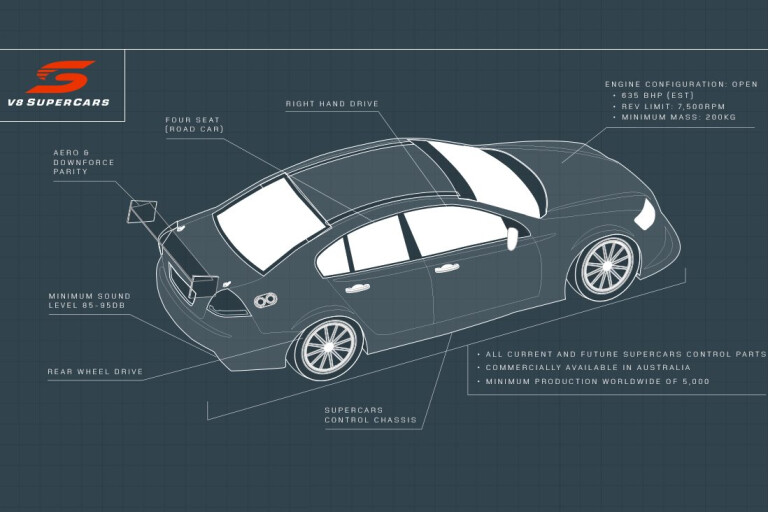
V8 engines to dominate post-2016, but new regs pave the way for turbos, coupes and more manufacturers
V8 Supercars will still be dominated by V8 engines even once the Aussie-made Holden Commodore and Ford Falcon are no longer being produced, but the new proposed set of technical regs also opens the door the potential entry of turbocharged coupes such as the 2015 Bathurst 12-hour winning Nissan GT-R. It’s also hoped that the changes will result in more manufacturers joining the series alongside Holden, Nissan, Volvo and Mercedes.
The new regulations for Australia’s premiere touring car category were publicly rolled out in draft from earlier today, dubbed ‘Gen2, ’and signal the end of the exclusive era for V8 engines and sedans that’s existed since 1993, following the switch from international Group A regulations.
One inevitable change for 2017 will be from the V8 Supercars name to simply ‘Supercars’.
While the current cars and engines will still be fully legal, the category says the move to allow a wider choice of engines and bodies reflects a rapidly changing automotive world that includes the demise of all local car manufacturing in Australia by the end of 2017.
It predicts the swap from 5.0-litre V8 sedans such as the cornerstone Ford Falcon and Holden Commodore that have been integral to the category for more than two decades to turbo V6s and coupes will be gradual.
Significantly, any new vehicle combinations must race in parity with the current V8 sedans, meeting the same engine power equivalence and aerodynamic specifications.
“We made it clear when we announced the Gen2 strategy that there will be no compromise in power, competition or technical parity,” V8 Supercars CEO James Warburton said.
“The category in 2017 will be exactly what it is now. Fast, loud and fiercely competitive. This opens the same garage door a little wider and future proofs the sport.”
American motoring racing icon Roger Penske, who took over Dick Johnson Racing this year, is lobbying Ford Performance in the USA to support a Mustang Supercars program, despite Ford Australia already declaring 2015 its last year in the category.
Meanwhile, Nissan Australia boss Richard Emery has openly stated Gen2 provides a potential opportunity to swap from the Altima V8 to the Nissan GT-R, a coupe powered by a turbo six-cylinder. Volvo has been linked with a racing version of the V60 wagon, while Holden is expected to embrace a turbo V6 when it swaps to an imported Commodore replacement in 2018.
Toyota’s Lexus luxury brand is a potential new player that has publicly confirmed it is considering entering the category after the introduction of Gen2.
The base Gen2 guidelines stipulate a car must be publicly available for sale in Australia, be front engined, right-hand drive and offer full four-seat configuration in its road going version. The race car must be rear-wheel drive and accurately reflect the look of the road car. All cars will use the existing Car of the Future chassis and control components, and be subject to current engine and aero parity rules.
The regulations state the model must have a minimum production volume of 5000 cars of the same body shape worldwide.
Sign up here to receive the latest round-up of Wheels news, reviews and video highlights straight to your inbox each week.

COMMENTS